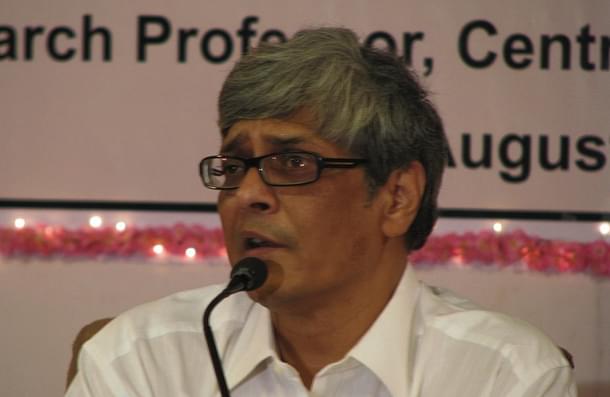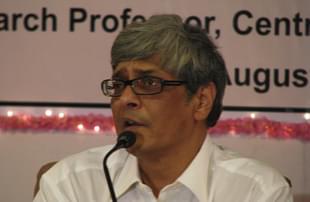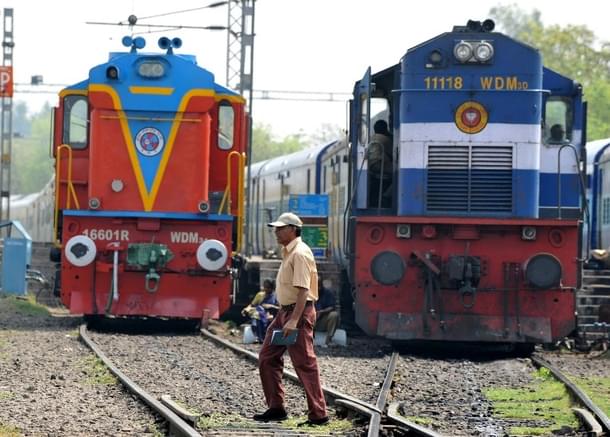Columns
Railways: Choice and Competition - XVIII
Bibek Debroy
Mar 29, 2015, 12:30 PM | Updated Feb 24, 2016, 04:30 PM IST
Save & read from anywhere!
Bookmark stories for easy access on any device or the Swarajya app.


Last column in the series Parallel Tracks, where Prof. Bibek Debroy summarises his suggestions for the Indian Railways
This is the last Railway column, with the standard caveat. On 31st March, the Interim Report of the Railway Committee will be submitted and will be placed in the public domain, for feedback, inputs and suggestions. Thereafter, we will finalize the report by the end of August. That being the case, there is nothing more for me to say (on the Railways) right now. It is all there in the Report. Pending that, here are my personal and final thoughts.
First, we can’t fix any organization until its finances are in shape. The Railways have an odd mix of commercial accounting and government accounts. Therefore, it is difficult to work out costs, or the rate of return on a project. If I borrow (from whoever) at a certain rate of interest, I need to know the rate of return. Hence, transit to commercial accounting. Do this down at the level of the divisions.
Second, since I have mentioned the divisions, rationalize the present structure of divisions/zones and decentralize powers down to the level of zones, divisions, stations, trains. Today, I don’t quite know who is responsible for a station or a train.
Third, in addition to finances, no organization can be fixed until its HR (human resources) is fixed. The present silos and departmentalism that everyone complains about is due to the multiple channels of entry at the officer level and subsequent vertical mobility upwards. For prospective entrants, streamline the entry process. Once this has been done, naturally, there is the complicated business of retroactively fitting in existing employees into that framework.

Fourth, fix the financial relationship between Indian Railways and Governments. Every line, every train and every activity isn’t going to be commercial.The present relationship with the Union government involves gross budgetary support, primarily for capital costs on un-remunerative lines and the payment of dividends (on a loan in perpetuity) by Indian Railways to the government. These are the so-called social costs. Let’s compute them properly and let the Union government cleanly subsidize for all such social costs, not just on capital costs, but also operation and maintenance. Once that has been done, there should be no additional budgetary support from the Union Government. There is a reason why I used the word Governments in the plural, a few sentences ago. The same principles also apply to State Governments, such as for suburban traffic.
Fifth, decide what Indian Railways must do. It’s primary purpose is the running of trains, the so-called core versus non-core debate. RPF, running schools and medical services aren’t part of the core Indian Railways system. So take them out of the Railway structure.
Sixth, production units (coaches, wagons, locomotives) and construction units aren’t part of the core Railway function either. Take them out from the Railway system. Permit free entry of the private sector in the production (and leasing) of coaches, wagons and locomotives.
Seventh, what is left? There are tracks (and related infrastructure) and the running of trains. Unpack the track part into a public corporation. Let’s call it the Railway Infrastructure Corporation (RIC). Let’s call the other bit of Railways the Train Operating Corporation (TOC). Permit private entry into the running of passenger and freight trains. TOC competes with the private players in the running of trains. There may be mandated social obligations on private players too. They should also be reimbursed.
Eighth, the regulatory structure has to be clear. The Ministry of Railways frames policy (defined as ensuring completion and the country’s welfare) for the entire Railway system, not just for RIC and TOC. The independent regulator ensures that these rules of competition are followed. Since access to track can be a problem, that’s the reason RIC has to be separate from TOC. Standards can also be an entry barrier. Therefore, the standard-setting bit of RDSO and the Commissioner of Railway Safety move to the regulator. The technology bit of RDSO remains with the Indian Railways, or moves to one of the Railway universities. The Railway Board only becomes a Board for TOC.

Ninth, there are multiple ways for RIC and TOC to raise finance, not just loans, but equity too. There are multiple assets (not just land) that can be monetized. Today, investments are financed by gross budgetary support, some internal generation and loans through IRFC. But this can be diversified, provided the accounts are in good shape.
Tenth, once you have those accounts, you can do a proper zero-based budgeting exercise, weeding out long-pending projects that are of doubtful use. Projects must either be financially viable, or they must be cleanly financed by Governments. In other words, separate out the commercial functions from the social objectives of the Railways, something that has been proposed for decades, but never implemented. Otherwise, if one is permitting private entry, one is exposing Indian Railways to unfair competition.
These are just my personal thoughts and you will find a great deal more of detail in the Report. As a Committee, we welcome suggestions and comments and when that Report is put up, you will also find an email address where you can send comments. We welcome comments from those who read the Report and are interested in improving the Indian Railway system. We won’t necessarily welcome comments from those who comment without reading the Report. (I am indirectly referring to a pink paper which decided to carry an editorial on the Report on 25th March, even before reading the Report, even before the Report was submitted.) We will filter those out.
Bibek Debroy is a noted Economist. His 10-volume translation of The Mahabharata is one of the most seminal works in contemporary Indology. He was a member of the Swarajya Advisory Board.




